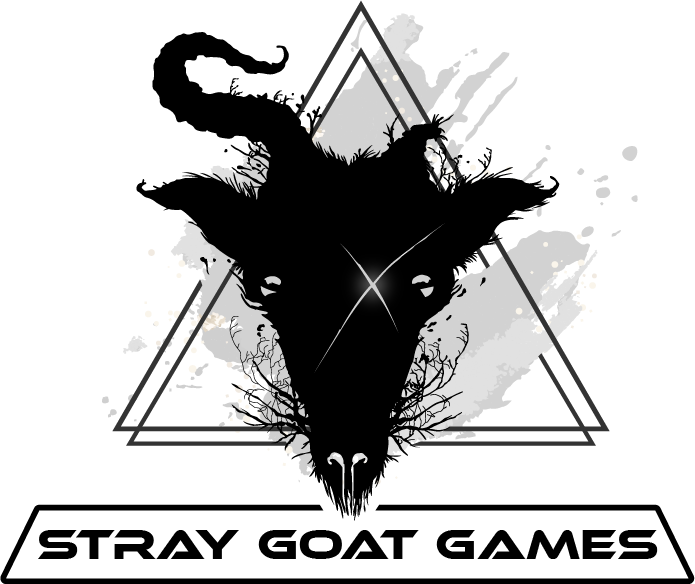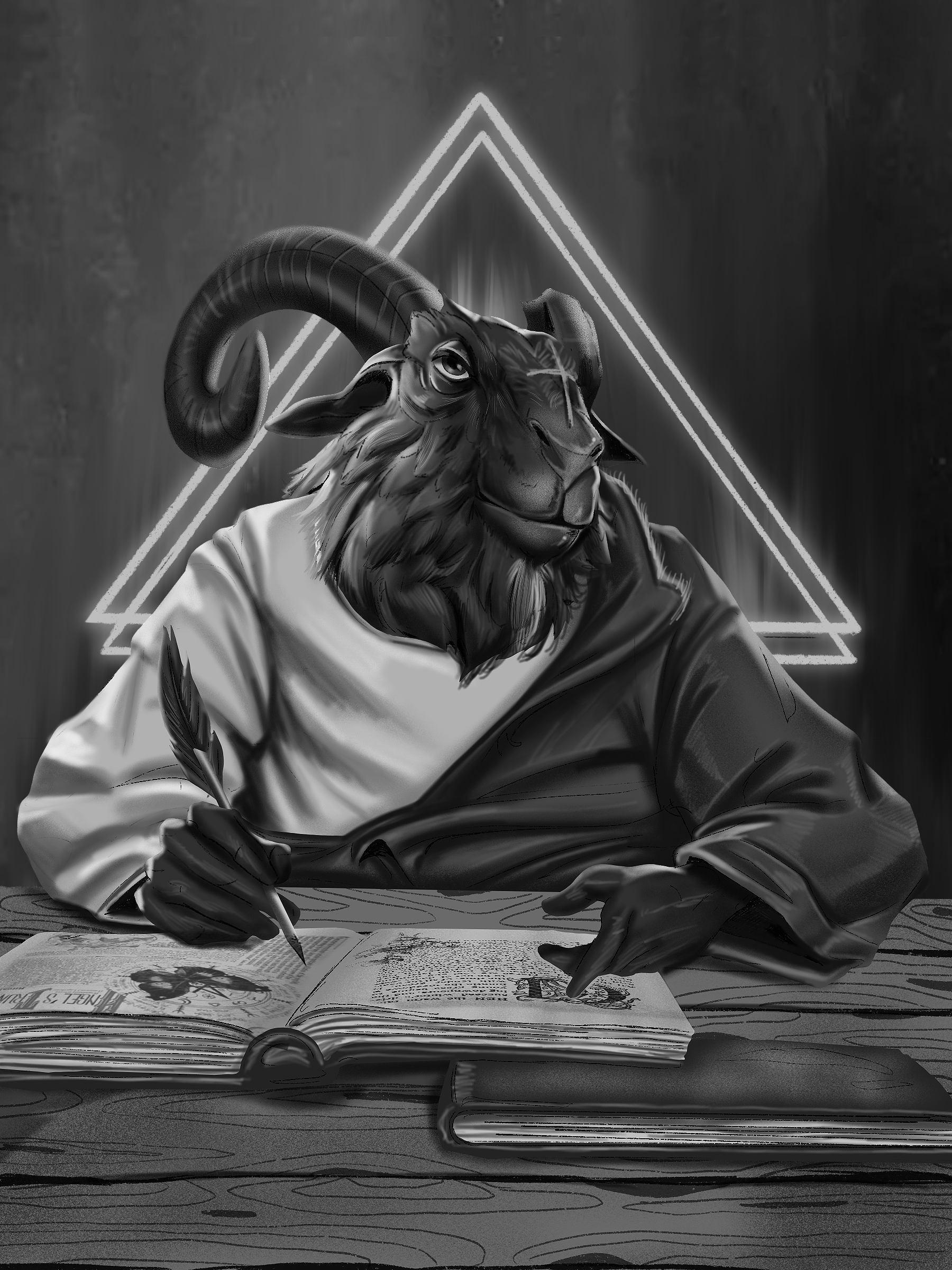The Origins of Tribulation
I still remember my adolescent days tearing through the contents of the Advanced Dungeon And Dragons starter kit with my friend Zebulon. The two of us fumbled through the archaic rules and played with the weird orange dice in a dingy room for hours. Before long, we were taking turns creating dungeons for one another to explore. But something was amiss. It became quite clear that my friend was creating dungeons intended to kill me quickly. As it turned out, he didn’t like the task of creating the dungeons and controlling the monsters, and was eager for his turn at the other side of the dungeon master screen.
Zebulon: In the first room you enter, you see two doors. After investigating them, you find there are no differences between the two. What do you do?
Me: I suppose I’ll need to go through one. I choose the left door.
Zebulon: You are sucked into the abyss of space. Game over. My turn!
Luckily for the both of us, I was more engaged when telling stories with my dungeons and bringing them to life. I enjoyed discovering how the puzzles I put before the heroes were overcome. And so, as fate would have it, I was forever cast as the Dungeon Master. Thus began a decades long pass-time of creating worlds for my friends to explore as we worked together to tell each other shared stories of heroism and triumph over evil.
Though hair sprouted in unusual places, new friends entered the scene, Diablo and Baldur’s Gate released to inspire new adventures, metal music blasted my eardrums, and color guard girls revealed new horizons, Dungeons and Dragons never quite went away.
These distractions served as momentary escapes from life’s hardships. And of those, there were plenty. So it came to be that as my friends and I faced these new realities, our shared stories began to mature with us. Our roleplaying sessions became more dire, serious, and complex to match the complexities of adult life fast approaching. We found the brave knights and wise wizards of our youths uninspiring. Stories emerged when the heroes faced difficult moral decisions, were irreparably maimed, and sometimes failed tragically.
Geth approached the entranceway. It took the visage of a demon’s face, mouth agape. No matter how close he brought his torch to the opening, the darkness would not recede. Emboldened by a lifetime of heroic success, he stepped into the darkness. His companions recoiled from the entrance, startled by the quick buzzes and zipping of rapid machinations, and the grotesque screams of their friend and companion. After an eternal instant of silence, Geth was spewed from the demon’s maw, covered in blood, with his shield arm flying after him. In place of his missing arm, an otherworldly growth whipped about, spitting vile magics. In the following hours, Geth felt his mind being taken from him, twisted by this new appendage. He begged his allies to sever it. And so they did.
Stories like these live on with us to this day. And “Geth the one armed dwarf” remains that player’s favorite character decades after his retirement. Creating moments like this became my passion as a world builder and cooperative storyteller. The light shines brightest in the darkest night, became my mantra. That is to say, it wasn’t the dour hopelessness of these elements that so gripped me, but the opportunity for true heroism in their shadows. Geth was blessed a magical arm by Mystra for his loyal service some 6 character levels later, after all.
Fast forward now to the cusp of my third decade. By this time, I had become a Song of Ice and Fire forum conspiracy theorist, and a Joe Abercrombie fanboy to the extreme. Outside of these authors (with a special nod to Robert E. Howard), fantasy was not all that appealing to me. I was instead gripped by grime covered tales that showed the all too human elements of the fiction, and didn’t pull their punches. Films like Fury and Saving Private Ryan explored the cruelties of war, and their perverting effects on the human soul. Films like Pan’s Labyrinth and Children of Men married myth and gritty reality in profound ways. Classic Star Trek episodes that explored the complex relationships of differing peoples and ideologies in a new light were made readily available for me to binge. It was also around this time that the serial television format became the new frontier of quality entertainment, spearheaded by Game of Thrones and Breaking Bad. So it came to be that Godless sent me back in time to explore the later grim westerns, which were made manifest in popular culture through the phenomenal Logan. Finally, The Expanse came in, dripping of Alien grime, to become my new favorite series. A position it will probably hold until a studio finally picks up the First Law.
Each of these works, intermingled with what I could extract from readings of Jung, Campbell, Haidt, and other intellectual powerhouses poking at the essence of human motivation and expression, were each a font of inspiration. My predominant nerdom about them served to enhance my worldbuilding and storytelling chops while simultaneously annoying my friends when discussed away from the gaming table.
Before long, I found myself entertaining Dungeons and Dragons alternatives, as well as modifying the roleplaying systems we used in order to implement these concepts into our stories. Just little things at first. We dumped resurrections from our world. We ignored the shallow alignment systems. We ended epic stories before the epic supoerhero-esk character levels. I began to paint with a limited palette of monstrous creatures to keep the ecosystems believable. Some of these modifications were more successful than others, as elements were often integrally tied to other elements of the game.
…the man Conan seemed suddenly to grow up in my mind without much labor on my part and immediately a stream of stories flowed off my pen or rather, off my typewriter almost without effort on my part. I did not seem to be creating, but rather relating events that had occurred. - Robert E. Howard
So it was, perhaps like ol’ Robert here, a demon began to grow in my mind. It introduced itself with a subtle whisper. “You’ve got ideas”, it said. “Why not create your own game?” What a tenacious demon that turned out to be.
Equal parts hubris, inspiration, and demonic possession, I took on the monumental task of creating a system and bringing to life a setting of my own. Work on Tribulation began. I was no stranger to game design. I had been dabbling, and rubbed shoulders with many designers during my time competing in the Game Of Thrones LCG national circuits. And the programming skills that pay the bills have a lot to say about system cohesion as well. Despite all that, I truly had no idea the burden I was adopting. I know many creatives will relate to what follows.
For years, I committed time every single day to some element of design. With that demon toiling tirelessly in some corner of my being, I wouldn’t dare to rest. Each time I’d think to resign, or even take a break, it would gnaw at the back of my mind and stomp on my tender stomach. The musings would echo in my skull in the still of the night. “What of this? What of that?“
What I thought would take months, then perhaps a year, indeed had many years to come. Each iteration of the game revealed new difficulties, new failures, and new possibilities. Like building a puzzle from disparate sets, the pieces refused to connect. When they did, the picture was not the one I’d hope to share. Many times, I gave up hope and tried to abandon the project. A second, more familiar demon reared his head. Why make this? Who is asking for it? The demons bicker. The work continued.
In the end, I must say that I owe that driving demon quite a lot. Tribulation has been an endless source of inspiration, and has already brought many a unique adventure to life. Should Tribulation never see the light of day beyond the few who have played it so far, I’m still pleased to have undertaken the task. In doing, I learned discipline. I learned about game design. I learned to work with artists. I learned about marketing and production. I learned InDesign. I learned to write. Most of all I learned how truly bad I was at all of it to begin with! Of course, as life reflects art, the dark trials made the accomplishments all the more bright. Refined by failures, the ambitions of the design bore fruit. It became clear that there was something worth showing for the effort.
I hope you like it!

